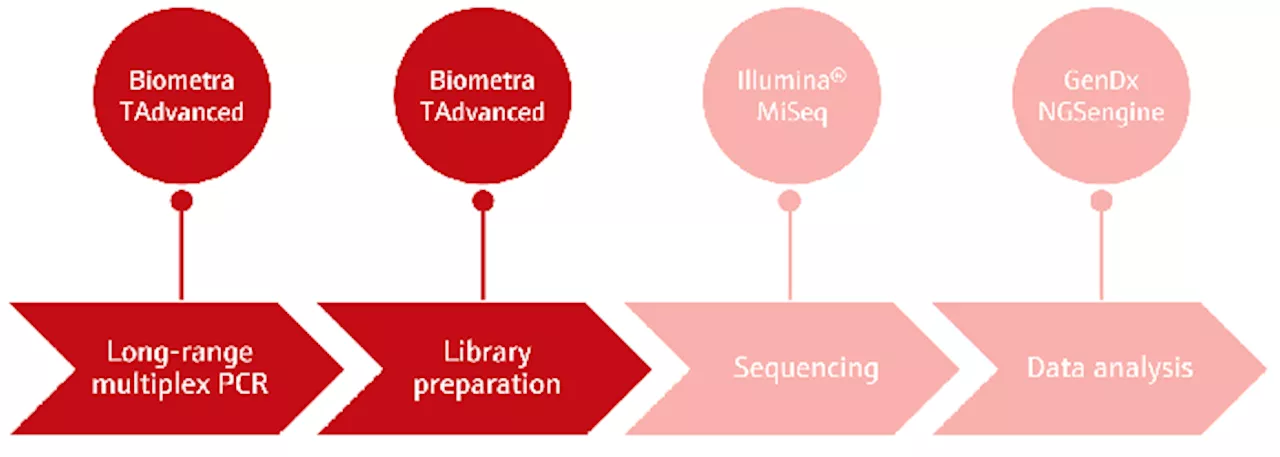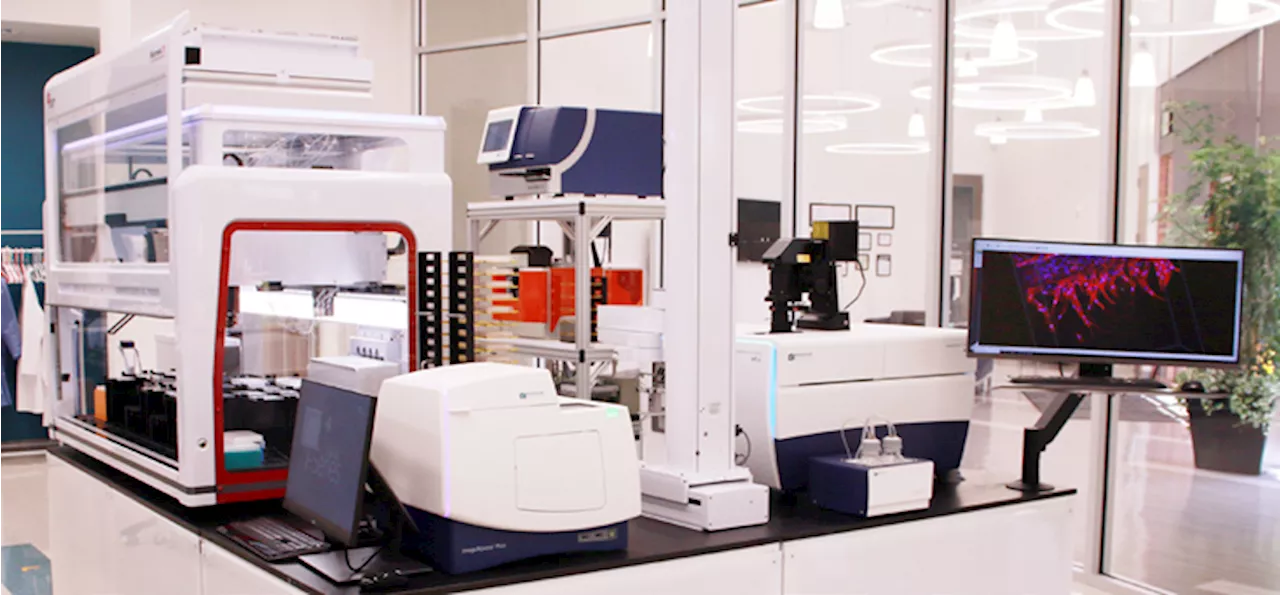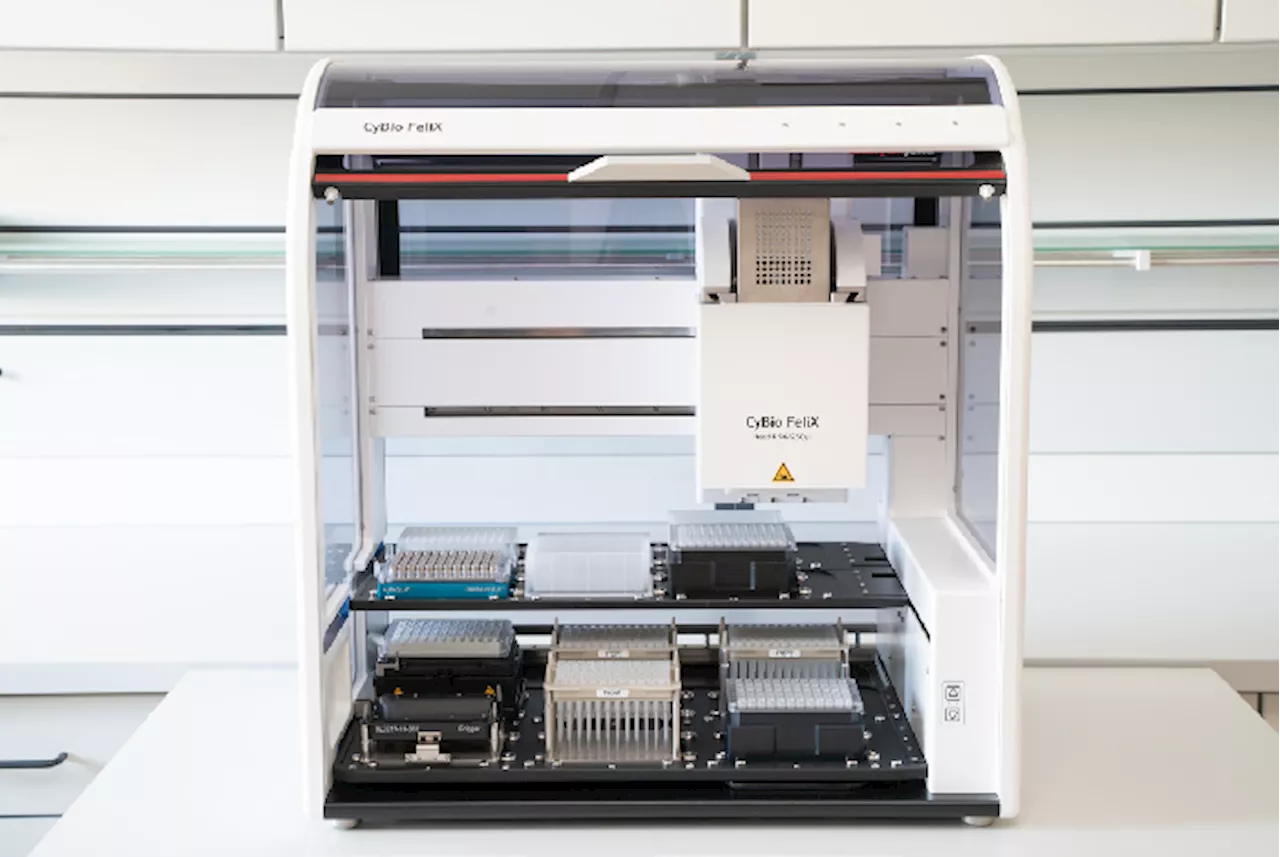Automated NGS improves accuracy and efficiency in HLA genotyping for transplants.
Sponsored Content by Analytik Jena USReviewed by Andrea SalazarOct 16 2024 Human leukocyte antigen genotyping is critical when preparing for stem cell transplants. The procedure is crucial to determine the genetic compatibility of the HLAs between the donor and recipient.1 A high level of compatibility considerably minimizes the risk of rejection and improves transplant success.
Magnetic beads allow DNA molecules to bind with their unique coating and optimal buffer conditions. The size of the bead-bound DNA fragments is largely determined by the concentration of the buffer components in which the beads are kept. The automated stages were integrated into the library preparation process of the NGSgo® Library Full Kit for NGS HLA typing. Before library preparation, the NGSGo® Ampx v2 kit was used to perform singleplex PCR on six distinct HLA loci.
Figure 2. Graphical deck layout for Protocol – Double-sided Size Selection. The CyBio FeliX provides 12 deck positions on 3 movable decks. The upper decks B and C equipped with the required accessories are shown on the left, the lower deck A is shown on the right. The 12-column reservoir on position 8 is equipped with 2 mL AMPure XP beads per column. Image Credit: Analytik Jena US
Step 4: Supernatant transfer In a single pipetting step, transfer the supernatant containing unbound DNA fragments into a fresh 96-well PCR plate using a RoboTipTray 96/250 µL. Place the plate on the BioShake using the gripper.Step 6: Setup for bead cleanup From the beads reservoir, 3.9 µL are transferred into each well of the 96 well PCR plate containing the supernatant. The beads are mixed with the DNA containing solution by pipetting five times.
Step 10: Ethanol wash Add 100 µL 80 % ethanol to the beads using a new RoboTipTray 96/250 µL. The beads are incubated with ethanol for 30 seconds while remaining on the well’s wall. Step 13: Final bead separation Place a PCR plate containing resolved beads on the magnet adapter using the gripper and incubate at room temperature for five minutes. Beads should not remain in the solution after incubation.
Results and discussion During library construction, DNA concentration measurements were taken before and after size selection and fragment size evaluations after sequencing using the NGSengine software to analyze the effectiveness of the size selection processes. These findings demonstrate that the cleansing and size selection operations effectively enrich the samples for high-quality, properly sized DNA fragments required for good sequencing performance.
This prevents tiny particles from attaching too tightly to the beads. Accurate adherence to incubation durations guarantees that the fragments are correctly sized. Another advantage is the increased precision, as manual procedures are more prone to errors, while automation enhances reproducibility. Additionally, the ergonomics of automation reduce the physical strain associated with manual handling, making the process more user-friendly.
About Life Science The Life Science product area demonstrates the biotechnological competence of Analytik Jena AG. We provide a wide product spectrum for automated total, as well as individual solutions for molecular diagnostics. Our products are focused to offer you a quality and the reproducibility of your laboratory results. This will surely ease your daily work and speed up your work processes in a certain way.
United Kingdom Latest News, United Kingdom Headlines
Similar News:You can also read news stories similar to this one that we have collected from other news sources.
 HLA typing using PCR and NGS technologyNGS technology and long-range PCR enable precise HLA typing for multiple applications.
HLA typing using PCR and NGS technologyNGS technology and long-range PCR enable precise HLA typing for multiple applications.
Read more »
 High-quality DNA library preparation for NGS with thermal cyclersPrecision thermal cyclers ensure accurate NGS DNA library preparation.
High-quality DNA library preparation for NGS with thermal cyclersPrecision thermal cyclers ensure accurate NGS DNA library preparation.
Read more »
 Automated Ratings Miss the Mark in Everton's Draw Against NewcastleDespite dominating the match, Newcastle United were left frustrated by Everton after failing to convert their chances. The author critiques Whoscored's automated ratings system for unfairly skewing towards Everton players and overlooking Gordon's performance.
Automated Ratings Miss the Mark in Everton's Draw Against NewcastleDespite dominating the match, Newcastle United were left frustrated by Everton after failing to convert their chances. The author critiques Whoscored's automated ratings system for unfairly skewing towards Everton players and overlooking Gordon's performance.
Read more »
 Enabling complex organoid assays by leveraging automated workflowsThis article from Molecular Devices discusses how automated workflows can be leveraged to enable complex organoid assays.
Enabling complex organoid assays by leveraging automated workflowsThis article from Molecular Devices discusses how automated workflows can be leveraged to enable complex organoid assays.
Read more »
 Premier League Delays Semi-Automated Offside Technology AgainThe Premier League has yet again delayed the implementation of semi-automated offside technology, pushing it to sometime in 2025. This decision comes after previous delays and widespread criticism for the league's reluctance to adopt a system already successfully used in other leagues and competitions.
Premier League Delays Semi-Automated Offside Technology AgainThe Premier League has yet again delayed the implementation of semi-automated offside technology, pushing it to sometime in 2025. This decision comes after previous delays and widespread criticism for the league's reluctance to adopt a system already successfully used in other leagues and competitions.
Read more »
 Premier League make rule change decision that impacts Man United and Man CityThe introduction of semi-automated offside technology (SOAT) has reportedly been delayed until later this year
Premier League make rule change decision that impacts Man United and Man CityThe introduction of semi-automated offside technology (SOAT) has reportedly been delayed until later this year
Read more »
